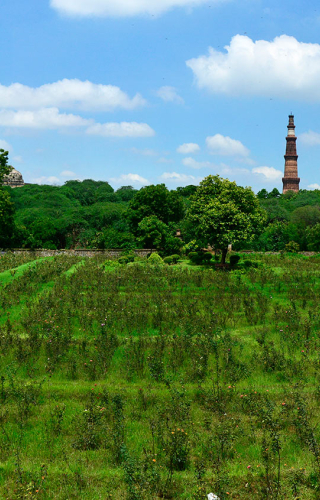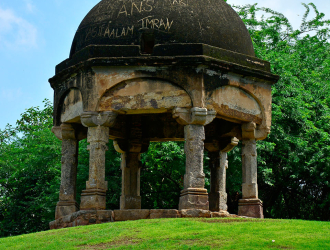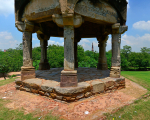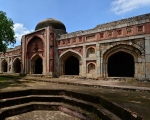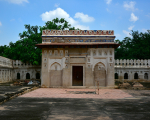The region around Mehrauli is the oldest continously inhabited region in Delhi. Urban settlement starts with the construction of Lal Kot built by Anang Pal Tomar in the 11th century. Lal Kot grew into the fortified citadel Qila Rai Pithora during the rule of the Chauhans, who were defeated by Mohammed Ghori in 1192.
The Qutab Minar was built by Sultan Illutmish along with the Quwwat-ul-Islam mosque at the beginning of the 13th century, and Mehrauli village grew up around the grave of the revered Sufi saint Qutubuddin Bakhtiyar Kaki. Settlements extended all the way south of the village to Hauz-i-Shamsi, an artifical tank constructed by Illutmish in 1230. Around this core urban area, a vast number of tombs, palaces, tanks, step wells, sarais, mosques and other buildings were constructed under the Khiljis, Tughlaqs, Lodhis, Surs, Mughals and British. As other cities were built at Jahanpanah, Siri, Tughlaqabad, Firoz Shah Kotla and Shahjahanabad, Mehrauli continued to be referred to as the original Delhi.
Modern Mehrauli consists of three distinct parts; the enclosed Qutub Complex, now a UNESCO World Heritage site, the urban Mehrauli village centered around Bakhtiyar Kaki's dargah and the beautifully landscaped—but abandoned—Mehrauli Archaeological Park. This image gallery consists of monuments inside Mehrauli Archaeological Park including Thomas Metcalfe's many 'follies' and his country house Dilkusha, the Jamali Kamali Mosque and the adjoining dargah of Maulana Jamali.
